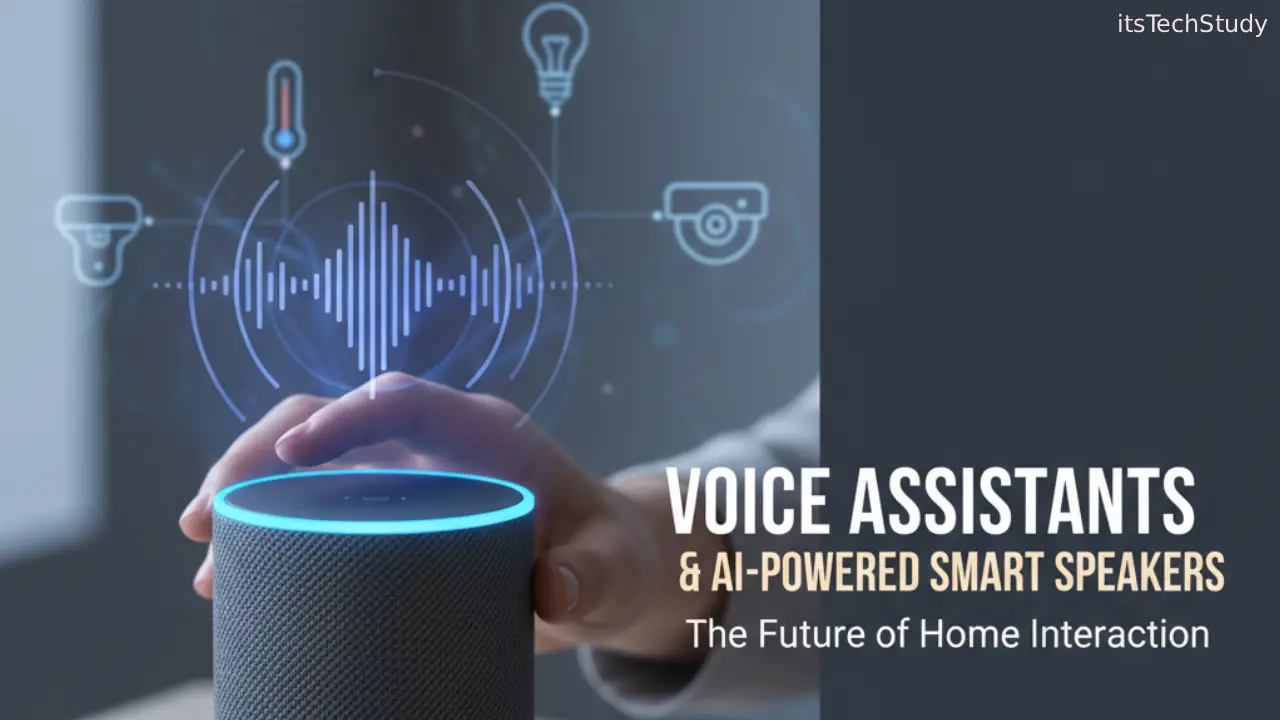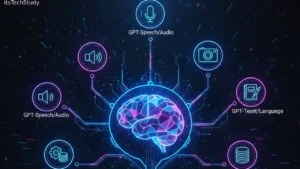Introduction: The Rise of AI Voice Assistants in Everyday Life
Just a decade ago, the idea of talking to a device and getting instant answers felt futuristic — something out of science fiction. Fast-forward to today, and AI-powered voice assistants like Amazon’s Alexa, Google Assistant, and Apple’s Siri have become a part of our daily routines. They live inside our smart speakers, phones, cars, and even appliances, transforming how we interact with technology.
Whether you’re asking Alexa to turn off the lights, using Siri to send a message, or telling Google Assistant to play your favorite playlist, these tools are doing more than just responding – they’re learning your habits, adapting to your preferences, and simplifying your daily life through artificial intelligence.
But as these devices get smarter, so do the challenges. Privacy concerns, device compatibility, and over-reliance on technology are now central discussions. Still, for most users, the convenience outweighs the concerns. In this article, we’ll explore how to effectively use AI-powered voice assistants and smart speakers to make your life easier, smarter, and more efficient.
What Are AI-Powered Voice Assistants and Smart Speakers?
Understanding the Technology Behind the Voice
An AI-powered voice assistant is a digital helper that uses natural language processing (NLP) and machine learning to understand spoken commands and respond intelligently. These assistants are built into devices such as smart speakers, smartphones, TVs, and even cars.
Smart Speakers: The Heart of a Connected Home
Smart speakers like Amazon Echo, Google Nest Audio, and Apple HomePod serve as physical platforms for these voice assistants. They connect to your home network and other smart devices, enabling you to control your environment hands-free — from playing music to adjusting thermostats.
| Feature | Amazon Alexa | Google Assistant | Apple Siri |
|---|---|---|---|
| Voice Activation | “Alexa” | “Hey Google” | “Hey Siri” |
| Smart Home Integration | Excellent with Amazon devices | Works with Google Home ecosystem | Best with Apple HomeKit |
| Music Services | Amazon Music, Spotify | YouTube Music, Spotify | Apple Music |
| Device Compatibility | Wide range | Broad (Android ecosystem) | Limited to Apple devices |
| AI Learning Capability | High (custom skills) | Advanced (contextual learning) | Moderate (Apple ecosystem) |
How AI Voice Assistants Simplify Your Daily Life
Let’s look at how these intelligent tools streamline everyday tasks, boost productivity, and make life more enjoyable.
1. Managing Your Smart Home Effortlessly
Voice assistants make home automation as easy as speaking. You can:
- Turn lights on or off without moving a finger.
- Adjust the thermostat to a perfect temperature.
- Lock or unlock doors with a simple command.
- Control smart TVs, cameras, and appliances remotely.
This seamless control is not only convenient but also energy-efficient, helping you reduce waste and optimize electricity usage.
2. Boosting Productivity and Time Management
AI assistants can act as personal secretaries. They can:
- Schedule meetings or appointments.
- Set reminders and alarms.
- Send messages or make calls.
- Provide weather updates, traffic info, and calendar notifications.
By delegating small tasks to your assistant, you free up mental space and time for more important activities.
3. Entertainment Made Easy
Smart speakers double as entertainment hubs. With just your voice, you can:
- Play music from streaming platforms like Spotify or Apple Music.
- Listen to podcasts or audiobooks.
- Get instant news updates or trivia quizzes.
- Control your TV or smart display.
It’s a hands-free entertainment experience tailored to your preferences.
4. Learning and Information Access
Curious about something? Just ask. AI voice assistants provide instant answers by pulling information from the web. They can also:
- Translate languages.
- Help with recipes or conversions.
- Provide educational assistance for students.
- Read out articles or summaries.
This makes them powerful learning companions for all ages.
Benefits of Using AI Voice Assistants
| Pros | Details |
|---|---|
| Convenience | Complete tasks through simple voice commands. |
| Accessibility | Helps people with disabilities operate devices hands-free. |
| Efficiency | Automates repetitive actions, saving time. |
| Integration | Connects seamlessly with multiple smart devices. |
| Personalization | Learns from user behavior and customizes responses. |
Challenges and Drawbacks
While AI assistants offer plenty of advantages, they’re not without limitations.
| Cons | Details |
|---|---|
| Privacy Risks | Always-listening microphones can raise data security concerns. |
| Dependence on Internet | Most features require a stable connection. |
| Limited Context Understanding | Sometimes misunderstand complex or ambiguous requests. |
| Ecosystem Lock-In | Certain assistants work best with their brand’s devices. |
| Accent/Language Issues | Recognition accuracy varies by user speech patterns. |
How To Use AI Voice Assistants Effectively
1. Set Up and Customize Your Assistant
- Connect your smart speaker to Wi-Fi and the corresponding app.
- Choose your default services (music, calendar, maps).
- Enable routines – e.g., “Good Morning” can trigger lights, weather, and news.
2. Integrate Smart Home Devices
- Pair compatible devices like bulbs, plugs, or cameras.
- Group devices by room for easier control.
- Use IFTTT (If This Then That) for cross-platform automation.
3. Use Voice Commands Smartly
- Speak clearly and naturally.
- Use contextual follow-ups, e.g., “What’s the weather?” followed by “What about tomorrow?”
- Create custom skills or shortcuts for frequently used actions.
4. Manage Privacy Settings
- Regularly delete voice recordings.
- Adjust permission settings to control data sharing.
- Use mute buttons when you don’t want the assistant listening.
5. Explore AI Updates and New Features
AI voice technology evolves constantly. Keep your device firmware updated to access new features, better voice recognition, and smarter automation options.
Future of Voice Assistants and Smart Speakers
The next generation of AI-powered assistants will be more conversational, context-aware, and proactive. With advancements in Generative AI, future smart speakers will:
- Anticipate user needs before being asked.
- Engage in deeper, natural conversations.
- Adapt to emotional tones in speech.
- Offer advanced personalization and real-time translation.
Moreover, integration with IoT (Internet of Things) and AI chips will make homes truly autonomous – from adjusting lighting based on mood to predicting daily routines.
Conclusion: Making AI Work for You
AI-powered voice assistants and smart speakers are not just gadgets – they’re digital companions that enhance convenience, productivity, and comfort. From managing your home to helping you learn, they integrate technology seamlessly into everyday life.
As AI continues to evolve, these assistants will become more intuitive, personalized, and human-like, bridging the gap between man and machine. By using them wisely – balancing convenience with privacy – you can unlock a smarter, more connected, and more efficient lifestyle.
Frequently Asked Questions (FAQs)
Q1: Are AI voice assistants safe to use?
Ans: Yes, they’re generally safe, but users should manage privacy settings and review stored voice data regularly. Most brands provide transparency reports and privacy control options.
Q2: Can I use multiple voice assistants in one home?
Ans: Yes, you can, though it may cause minor conflicts. Some users keep Alexa for home control and Google Assistant for productivity tasks.
Q3: Do voice assistants work without the internet?
Ans: Limited functionality (like timers or Bluetooth control) may work offline, but most features require internet access for AI processing and updates.
Q4: Which is the best smart speaker for beginners?
Ans: The Amazon Echo Dot and Google Nest Mini are affordable, easy to set up, and ideal for newcomers.
Q5: How do AI assistants learn my preferences?
Ans: They use machine learning algorithms to analyze your commands, routines, and frequently used services — improving responses over time.
Q6: Can voice assistants understand regional languages?
Ans: Yes, most modern assistants support multiple languages and regional accents. Google and Alexa, for example, support several Indian languages like Hindi and Tamil.












No Comments Yet
Be the first to share your thoughts.
Leave a Comment